Submerged Aquatic Weeds
Submerged aquatic weeds grow completely underwater unless they are exposed by low water levels. Many of them have leaves and stems that are hollow, allowing for some buoyancy. Their growth can be affected by many factors such as light penetration, nutrients, and temperature of the water.
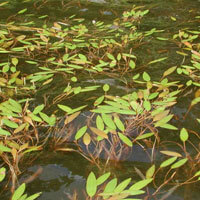
American Pondweed
American Pondweed has elliptical to oval leaves that grow 4 to 7 inches long and 1 to 2 inches wide. It has both floating and submerged leaves. The submerged leaves are smaller and less abundant than the floating leaves.
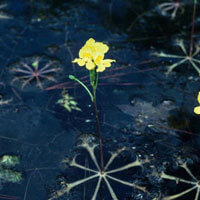
Bladderwort
Bladderwort is a carnivorous, submerged aquatic plant that grows numerous, small bladders. The bladders are used to capture small aquatic organisms for digestion. It has a yellow flower that grows above the surface of the water.
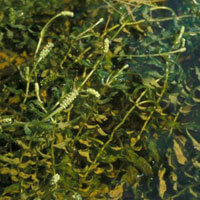
Clasping Leaf
Clasping Leaf pondweed is known for a broad base wrapping around the stem. It has wide, wavy leaves that are alternately arranged. The upper stem is branched and leafy. Small fruits form in a spike toward the tip and no floating leaves are produced. It can sometimes be confused with Curly Leaf pondweed.
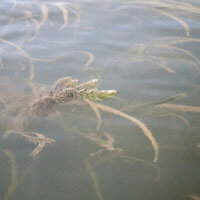
Coontail
Coontail is a branching aquatic plant that is dark green in color. It is also known as Hornwort. It anchors to the sediment despite having no true roots. It can grow very rapidly in ponds and lakes. The stems and leaves have a tendency to be somewhat stiff and brittle.
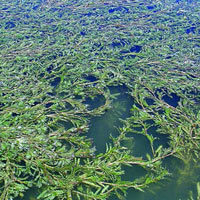
Curly Leaf Pondweed
Curly Leaf pondweed has crinkled, somewhat stiff leaves that are arranged alternately around the stem. The leaves are ½” wide and 2 to 3 inches in length. It can sometimes be confused with Clasping Leaf Pondweed
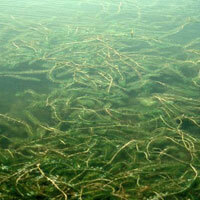
Eurasian Milfoil
Milfoil is an aggressive, non-native water weed which is now flourishing throughout the U.S. This weed chokes out native plants and spreads rapidly to new areas. Milfoil reproduces by a process called “fragmentation.” Milfoil plants easily break into small pieces and each piece can form roots. A single wisp can multiply into 250 million new plants in one year. Milfoil is readily spread between lakes and rivers by boaters carrying plant fragments on their boats and trailers.
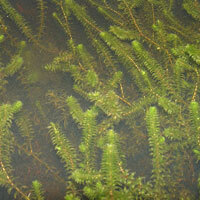
Elodea
American waterweed (Elodea) is what many people commonly think of as “that aquarium plant.” It is also known by several other common names such as Canadian waterweed, common elodea, or anacharis. The use of these names causes it to be confused with the similar-looking non-native plants like Brazilian Elodea or Hydrilla.
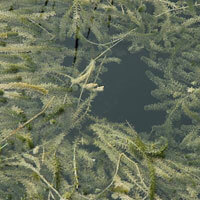
Hydrilla
Hydrilla forms dense mats of vegetation that interfere with recreation and destroy native plants that provide habitat for fish and wildlife. Unlike other problem aquatic plants, like Brazilian elodea, that reproduce only by fragmentation, hydrilla spreads by seeds, tubers, plant fragments, and turions (overwintering buds). One square meter of hydrilla can produce 5,000 tubers. Once hydrilla becomes established, it is readily spread by waterfowl and boating activities.
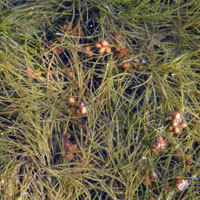
Sago Pondweed
Sago Pondweed has bushy clusters of thread-like leaves that taper to a pointed end. The roots form a mat on the bottom of a pond or lake. It can grow very quickly under the correct conditions. It grows in alkaline, brackish, or saline water.
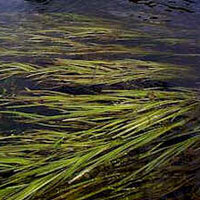
Tape Grass
Tape Grass is a submerged aquatic plant that spreads by runners and sometimes forms tall underwater meadows. It is common in both still and fast-flowing waters. The leaves arise in clusters from their roots. They are about one inch wide and can be several feet long. The leaves have rounded tips, and definite raised veins. Single white female flowers grow to the water surface on very long stalks. Tape grass fruit is a banana-like capsule having many tiny seeds.
